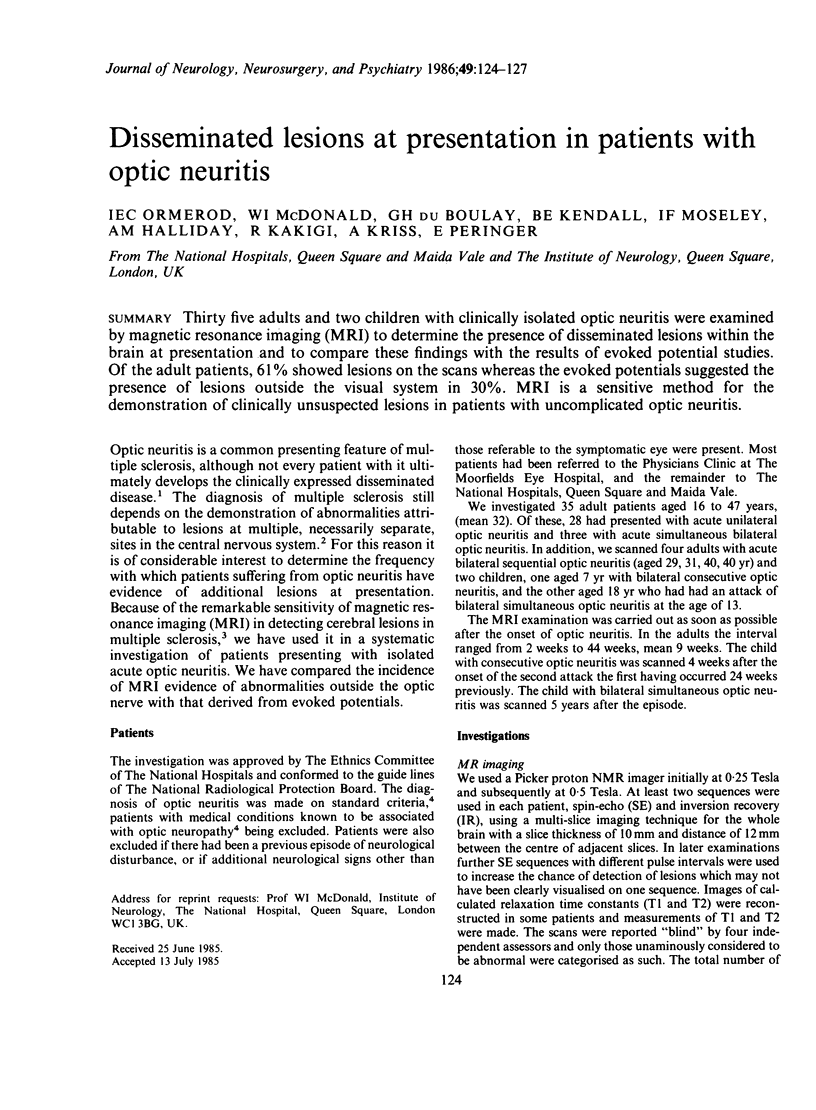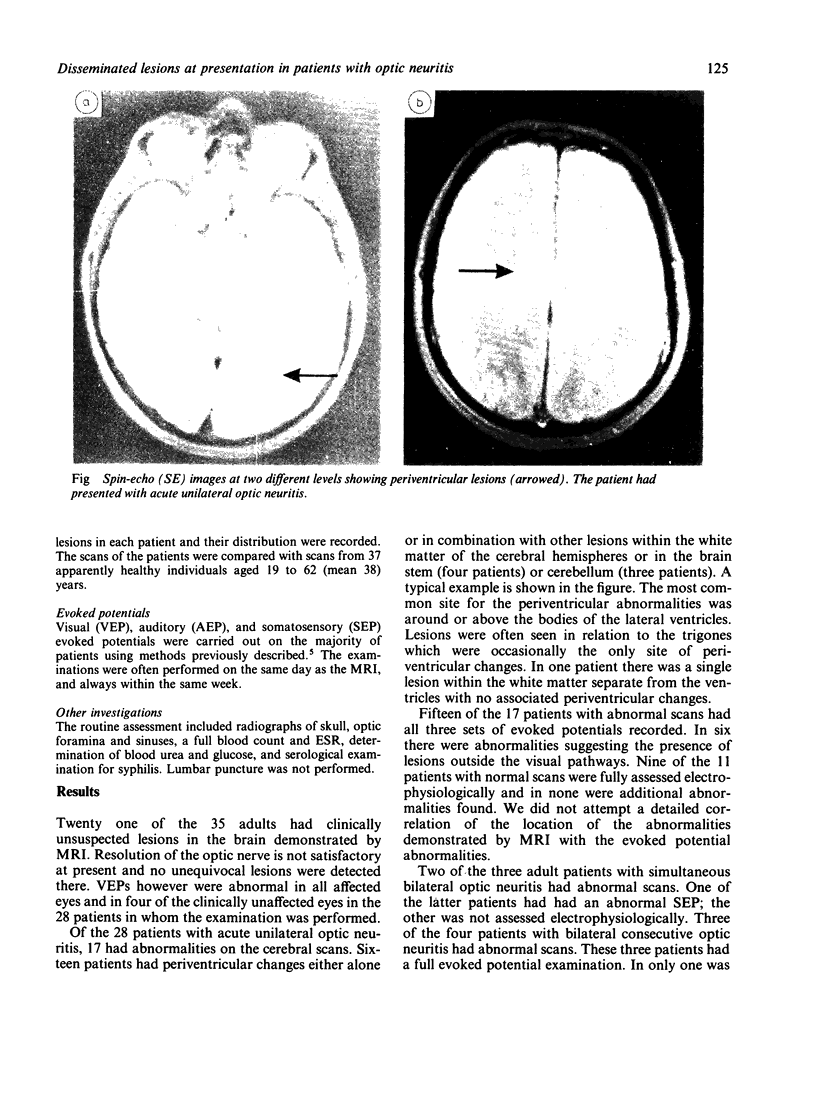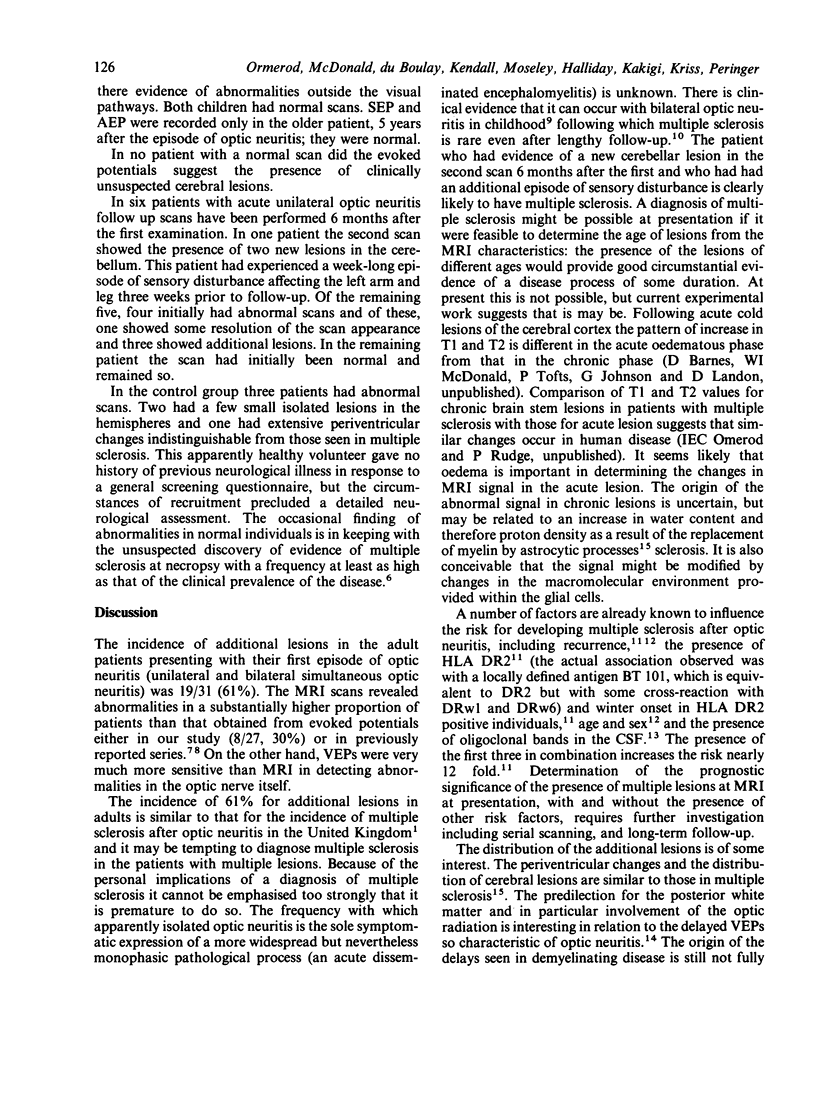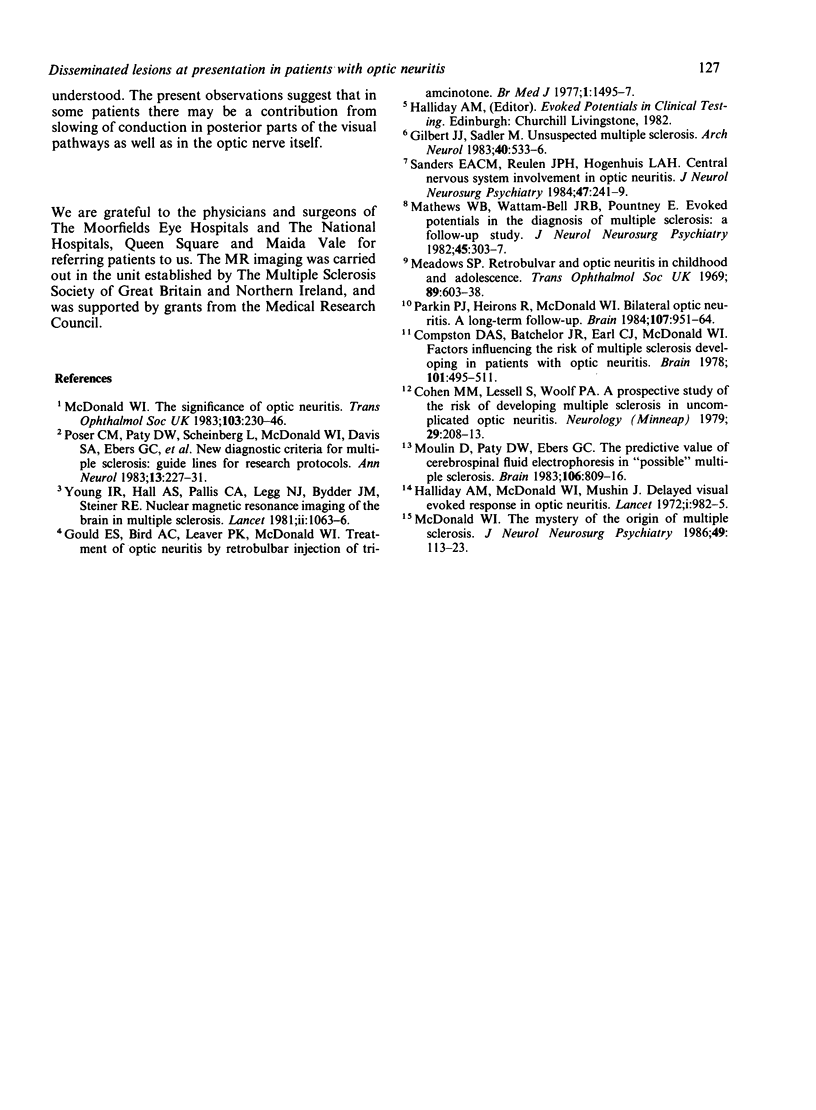Abstract
Thirty five adults and two children with clinically isolated optic neuritis were examined by magnetic resonance imaging (MRI) to determine the presence of disseminated lesions within the brain at presentation and to compare these findings with the results of evoked potential studies. Of the adult patients, 61% showed lesions on the scans whereas the evoked potentials suggested the presence of lesions outside the visual system in 30%. MRI is a sensitive method for the demonstration of clinically unsuspected lesions in patients with uncomplicated optic neuritis.
Full text
PDF



Images in this article
Selected References
These references are in PubMed. This may not be the complete list of references from this article.
- Cohen M. M., Lessell S., Wolf P. A. A prospective study of the risk of developing multiple sclerosis in uncomplicated optic neuritis. Neurology. 1979 Feb;29(2):208–213. doi: 10.1212/wnl.29.2.208. [DOI] [PubMed] [Google Scholar]
- Compston D. A., Batchelor J. R., Earl C. J., McDonald W. I. Factors influencing the risk of multiple sclerosis developing in patients with optic neuritis. Brain. 1978 Sep;101(3):495–511. doi: 10.1093/brain/101.3.495. [DOI] [PubMed] [Google Scholar]
- Gilbert J. J., Sadler M. Unsuspected multiple sclerosis. Arch Neurol. 1983 Sep;40(9):533–536. doi: 10.1001/archneur.1983.04050080033003. [DOI] [PubMed] [Google Scholar]
- Gould E. S., Bird A. C., Leaver P. K., McDonald W. I. Treatmenf of optic neuritis by retrobulbar injection of triamcinolone. Br Med J. 1977 Jun 11;1(6075):1495–1497. doi: 10.1136/bmj.1.6075.1495. [DOI] [PMC free article] [PubMed] [Google Scholar]
- Halliday A. M., McDonald W. I., Mushin J. Delayed visual evoked response in optic neuritis. Lancet. 1972 May 6;1(7758):982–985. doi: 10.1016/s0140-6736(72)91155-5. [DOI] [PubMed] [Google Scholar]
- Matthews W. B., Wattam-Bell J. R., Pountney E. Evoked potentials in the diagnosis of multiple sclerosis: a follow up study. J Neurol Neurosurg Psychiatry. 1982 Apr;45(4):303–307. doi: 10.1136/jnnp.45.4.303. [DOI] [PMC free article] [PubMed] [Google Scholar]
- McDonald W. I. Doyne lecture. The significance of optic neuritis. Trans Ophthalmol Soc U K. 1983;103(Pt 3):230–246. [PubMed] [Google Scholar]
- McDonald W. I. The mystery of the origin of multiple sclerosis. J Neurol Neurosurg Psychiatry. 1986 Feb;49(2):113–123. doi: 10.1136/jnnp.49.2.113. [DOI] [PMC free article] [PubMed] [Google Scholar]
- Meadows S. P. Doyne memorial lecture (1969). Retrobulbar and optic neuritis in childhood and adolescence. Trans Ophthalmol Soc U K. 1970;89:603–638. [PubMed] [Google Scholar]
- Moulin D., Paty D. W., Ebers G. C. The predictive value of cerebrospinal fluid electrophoresis in 'possible' multiple sclerosis. Brain. 1983 Dec;106(Pt 4):809–816. doi: 10.1093/brain/106.4.809. [DOI] [PubMed] [Google Scholar]
- Parkin P. J., Hierons R., McDonald W. I. Bilateral optic neuritis. A long-term follow-up. Brain. 1984 Sep;107(Pt 3):951–964. doi: 10.1093/brain/107.3.951. [DOI] [PubMed] [Google Scholar]
- Poser C. M., Paty D. W., Scheinberg L., McDonald W. I., Davis F. A., Ebers G. C., Johnson K. P., Sibley W. A., Silberberg D. H., Tourtellotte W. W. New diagnostic criteria for multiple sclerosis: guidelines for research protocols. Ann Neurol. 1983 Mar;13(3):227–231. doi: 10.1002/ana.410130302. [DOI] [PubMed] [Google Scholar]
- Sanders E. A., Reulen J. P., Hogenhuis L. A. Central nervous system involvement in optic neuritis. J Neurol Neurosurg Psychiatry. 1984 Mar;47(3):241–249. doi: 10.1136/jnnp.47.3.241. [DOI] [PMC free article] [PubMed] [Google Scholar]



